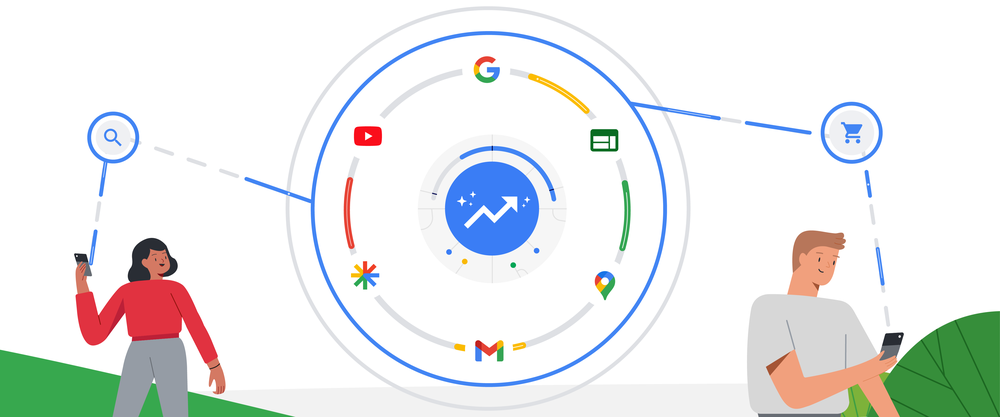Goodbye cookies, hello FLoC! After catching up on the emergence of federated cohort learning and the disappearance of third-party cookies in Chrome planned for 2023 in our blog, it’s time for the next and most important thing: what can we as advertisers do to adapt to this new cookie-free reality?
In a word: forecasting.
At All Around, we are partnering with our customers to help them prepare FloC alternatives, so that they are ready for a cookie-less future. Here are some of the alternatives we’ve established:
1. Develop direct relationships with your customers
If consumers trust you, undoubtedly you have the greatest asset a company can possess. The information that your customers provide you in a consensual and free manner is one of your primary assets. Turn it into a database and you’ll have everything you need to get started.
Managing these long-term relationships and turning them into profiles is easier through comprehensive options like CRMs. At All Around we collaborate with HubSpot as a certified agency and we focus on global inbound marketing strategies to help our clients to listen and learn from their customers. These platforms combine sales, customer service and marketing. This is key to cross-data and spot opportunities you haven’t seen previously.
2. Rely on automation
Another advantage of using a CRM for your lead nurturing or sales campaigns is that they can be automated, making an otherwise tedious and repetitive process something simple and very productive. Once your database is fed, you will know at all times what your customers need individually. This means that you can carry out personalised advertising campaigns with minimal effort.

3. Embed a CDP
While a CRM focuses on customers, a Customer Data Platform (CDP) takes into account that information can come from different channels: purchase data, forms, multiple devices, etc. A CPD ”cleans” the data, creating a unique profile for each consumer and allowing other technologies to access it so that it can then be used in marketing campaigns.
4. Don’t forget about trends
Do you want more insights? Prediction is another tool on the rise. If most of your users say the same thing about a product or service, perhaps you can use this information to go ahead and improve your offering. What if everyone behaves similarly at a given time or in a certain situation? Don’t stay trapped in the data: learn how to interpret it and take advantage of digital analysis tools with predictive metrics like GA4 (which we discussed in a previous post).
5. Email is not dead
An email associated with a user is a persistent identifier and an additional way to connect with the consumer. But beware: there are still rules of engagement. You want to create a highly-effective e-mail marketing campaign that does not end up in a spam folder. Check out our e-mail marketing tips here.
6. First-party cookies will continue to work
Remember that the measure announced by Google affects third-party cookies, not all cookies. This means first-party cookies remain as valid as ever! Make sure you have the right infrastructure in place to tag user behaviour within your website and always with the user’s consent. Sign-in environments also help you get to know your users better. All this will provide you with invaluable information about their preferences and also potential improvements that you can carry out on your website to offer them the best possible experience.
7. Find your users on cookie-free platforms
In-app browsers and tablets are traditionally cookie-free platforms. Even if they have fewer users, they are still a source of information that you can take advantage of.
8. Learn to discern where you really want to promote yourself
Advertising in places with little traffic or where your potential customers are not spending time is a waste of time and money. Advertising on the wrong platform may attract a user-base unlikely to purchase, and worse, you may be exposing your brand to an environment that reflects values that conflict with your company image and culture.
Currently, SEO is in vogue in PR circles due to the quality of mentions and links it generates. This practice it is nothing new, but until recently, only large companies really focused on this area. Public relations are rediscovering the value of maintaining contact with prestigious media in the relevant sector with a double objective: to be truly visible to your audience and to achieve objective recognition through media.
The most successful marketing strategies combine several areas of work. Whether you have an internal communication department or work with a marketing agency on SEM, SEO or other types of online strategy, it is important to change company mentality and set common goals. Even the best advertorial in the world will not bring you real value if you do not publish where your potential customers are. When all your departments are coordinated and rowing in the same direction, your online presence is more likely to be a success.
If you need help deciding on the best solution for your business in preparation for FLoC and the disappearance of third-party cookies with minimal impact to your campaigns, contact us and we will help you choose the most suitable path.







